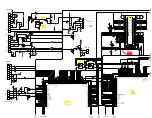
50
TK 56430-18-IP-EN
Minimum Hose Bend Radius
•
Hoses must be designed to allow for a smooth, gradual bend radius.
•
Hoses that are made too short will have a bend radius too small. When the bend radius is too small, the hose can be
kinked and damaged which will result in decreased performance and premature hose failure.
•
Damage to the internal liner of the hose can be present without evidence on the exterior.
IIm
mp
po
orrtta
an
ntt:: A new hose must be installed if the hose has any appearance of kinks or damage.
Figure 44.
Minimum bend radius allowed for the various hose sizes.
Securing Refrigeration Hoses
All refrigeration hoses must be neatly routed and secured adequately to prevent damage from rubbing, chafing, or
making contact with hot or rotating components.
•
Band wraps can be used to secure unit hoses to existing vehicle harnesses, frame mounts or electrical harnesses.
•
Insulated clamps can be used to secure hose(s) to vehicle’s chassis when no existing attaching points are available.
•
Hoses can also be bundled together with other hoses or harnesses.
•
Refrigeration hose(s) should be secured to existing frame mounts or to vehicle’s harnesses with band wraps as
shown.
•
Refrigeration hoses should be secured to vehicle’s frame with insulated steel clamps as shown.
Supporting Hoses
Vehicle powered truck units require various size refrigeration hoses be run long distances, therefore it is important they
are adequately supported to prevent damage.
•
Due to the weight and bulk of the refrigeration hoses, insulated steel clamps should be used to secure hoses a
minimum of every 12 inches.
















































